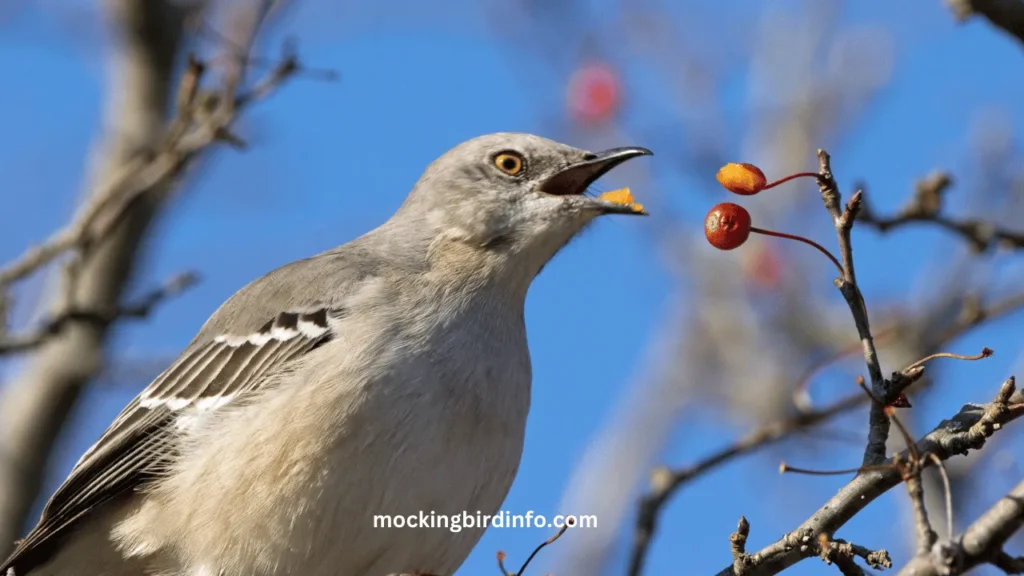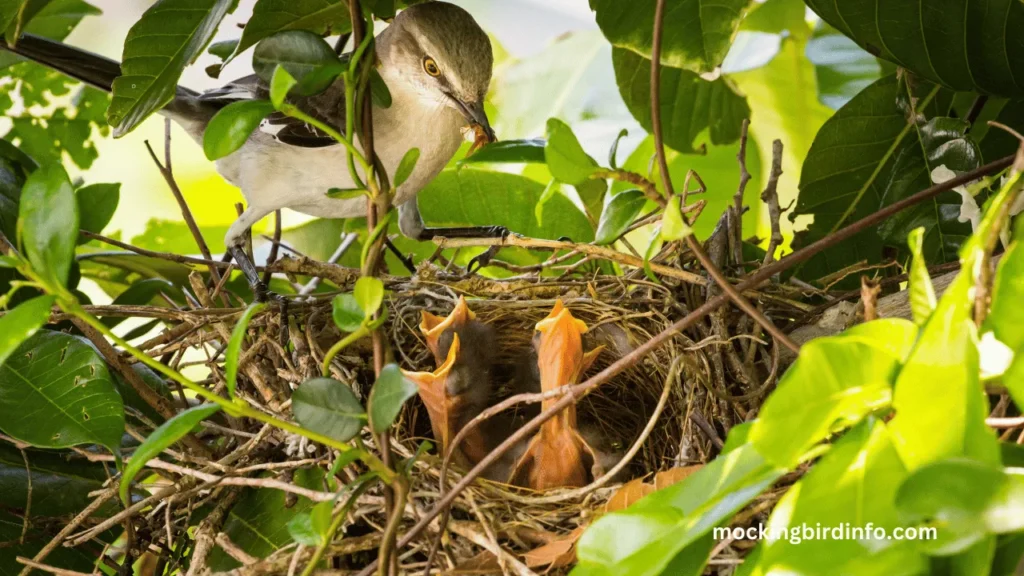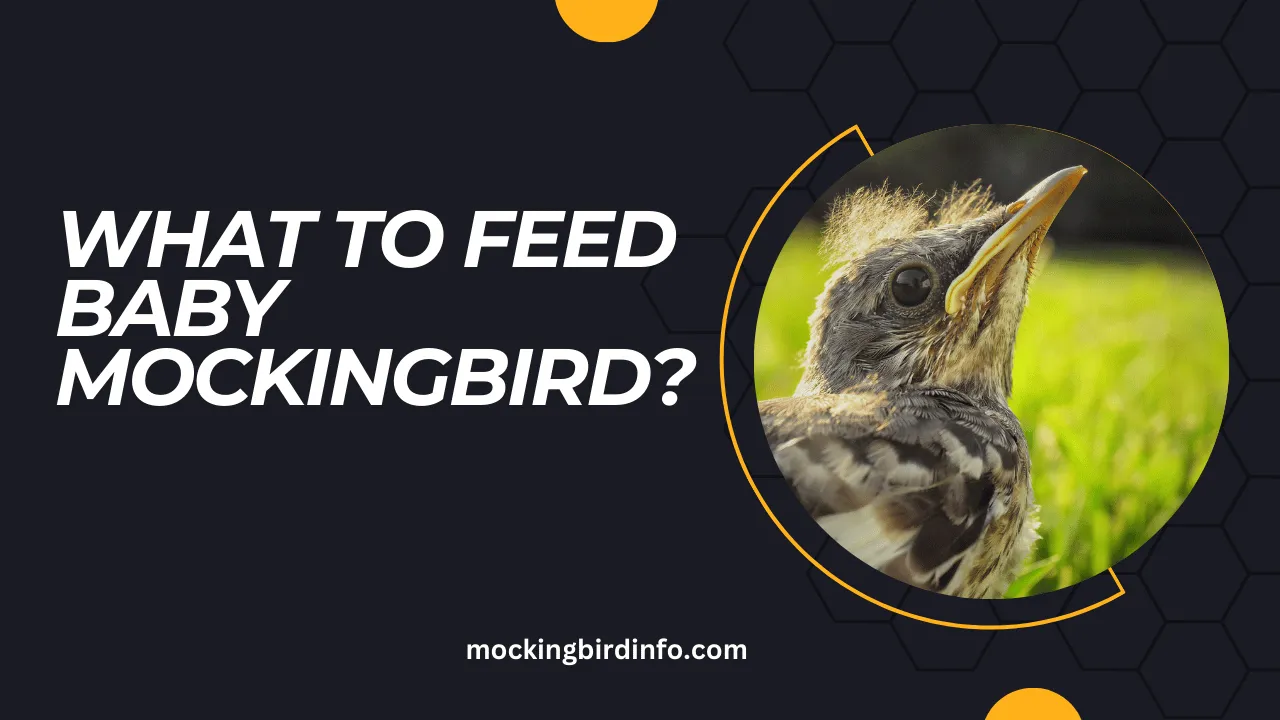One morning, you might find yourself facing an unexpected chirp from the bushes or beneath a tree—a tiny, wide-eyed baby mockingbird calling for help. It’s both heartwarming and alarming to realize such a fragile creature depends on you for survival.
If you’ve ever wondered, “What do I feed a baby mockingbird to keep it healthy?” you’re not alone. Many well-meaning rescuers step into this role, only to find themselves confused by the conflicting advice on feeding and care.
Ensuring that a baby mockingbird receives the right nutrition can mean the difference between life and death. These birds have specialized dietary needs that mimic what they would consume in the wild: a diet rich in proteins, complemented by essential nutrients.
By understanding what these fledglings need, you’re not only aiding in their growth but also preparing them for a return to the wild where they can thrive.
In this guide, we’ll dive into the specific foods you should provide, explore feeding techniques, highlight common health risks, and discuss the ethical responsibilities of caring for a wild bird. By the end, you’ll be equipped to support these tiny creatures responsibly and effectively.

Contents
- 1 Dietary Needs of Baby Mockingbirds
- 2 Appropriate Feeding Techniques
- 3 Potential Health Risks
- 4 Ethical Considerations in Bird Rehabilitation
- 5 Conclusion
- 6 FAQs
- 6.1 1. What is the primary food for baby mockingbirds?
- 6.2 2. Can I feed a baby mockingbird bread or milk?
- 6.3 3. How often should I feed a baby mockingbird?
- 6.4 4. What should I use to feed a baby mockingbird?
- 6.5 5. How do I keep a baby mockingbird hydrated?
- 6.6 6. What are signs of malnutrition in a baby mockingbird?
Dietary Needs of Baby Mockingbirds
Insects as the Primary Food Source: Baby mockingbirds rely heavily on insects, which form the bulk of their diet. In the wild, parents bring a variety of protein-rich insects such as caterpillars, grasshoppers, and beetles to their young.
These insects provide essential amino acids and proteins that fuel growth and help build strong muscles and feathers. When caring for a baby mockingbird, ensure that you mimic this natural diet by offering live or freeze-dried insects. Crickets and mealworms, readily available in pet stores, can be excellent substitutes.
Soft, Easily Digestible Foods: Besides insects, young mockingbirds benefit from soft foods that are easy on their still-developing digestive systems. Small pieces of ripe fruits like berries can offer vital vitamins and hydration.
Make sure any fruit is finely chopped to avoid the risk of choking. Foods like mashed boiled eggs can also be introduced, adding a valuable source of protein and fat to the diet.
Hydration: It’s crucial to maintain adequate hydration for baby birds. While they usually obtain water through their food, additional hydration might be needed in warm weather or if feeding dried insects. Carefully drip water onto the bird’s beak using a small syringe or dropper, being cautious not to flood the beak and risk aspiration.
Appropriate Feeding Techniques
Hand-Feeding: The method of delivering food is just as important as the food itself. Baby mockingbirds are best fed with tweezers or a specialized bird feeding syringe. Gently opening the bird’s beak and placing the food inside simulates the feeding done by their parents. Always handle the bird carefully to avoid causing unnecessary stress or injury.
Feeding Frequency: Young birds need frequent meals. For a baby mockingbird, feedings should occur every 30 to 60 minutes during daylight hours. The exact frequency depends on the bird’s age; very young hatchlings may require feeding as often as every 20 minutes.
As the bird grows and starts showing signs of independence, the intervals between feedings can be gradually increased.
Monitoring Food Intake: Regularly check the baby’s crop (the small pouch in its throat where food is stored before digestion) to ensure it’s neither too empty nor overly full. If the crop doesn’t empty properly between feedings, this could be a sign of digestive issues, requiring immediate attention.

Potential Health Risks
Malnutrition: One of the most significant risks for a rescued baby bird is malnutrition. Without the right balance of protein, fat, and vitamins, a bird may suffer from stunted growth, weak bones, or feather deformities.
This makes it essential to avoid feeding them common kitchen scraps like bread or milk, which lack the necessary nutrients and can be harmful.
Digestive Issues: Offering inappropriate food can lead to digestive problems, such as impaction or diarrhea. Foods that are too dry, fibrous, or hard to digest may accumulate in the bird’s system, preventing proper nutrient absorption. Ensure that all food is soft, moist, and cut into tiny, manageable pieces.
Infection: Infections are a major concern, especially from bacteria that can thrive on improperly cleaned feeding equipment. Always sterilize tools such as syringes, tweezers, and feeding dishes after each use to minimize this risk. Additionally, monitor the bird for signs of illness, such as lethargy or a sudden decrease in appetite, and seek veterinary advice when necessary.
Ethical Considerations in Bird Rehabilitation
Legal and Ethical Guidelines: Before deciding to care for a wild bird, it’s vital to understand the legal and ethical guidelines. In many areas, wildlife laws regulate the handling of native birds, and unauthorized care may be illegal. Always research local wildlife rehabilitation regulations and seek a permit if necessary.
Releasing the Bird Back into the Wild: The ultimate goal is to help the bird regain its independence. Once it is strong and able to fly, the transition back to the wild should be gradual.
Encourage foraging behavior by placing insects and fruit where the bird can find them on its own, simulating a natural learning environment. Assess its flight skills and general health to ensure it can survive without human assistance.
When to Seek Professional Help: Some cases require the expertise of a licensed wildlife rehabilitator. If the baby mockingbird is injured, severely malnourished, or showing signs of illness, seeking professional care is the most ethical option to ensure the bird’s best chance of survival.
Conclusion
Recap Key Points: Taking care of a baby mockingbird involves understanding its dietary needs, mastering proper feeding techniques, and recognizing potential health issues. Protein-rich insects, soft fruits, and monitored hydration are all critical for proper growth and development.
Ethical considerations and adherence to local wildlife regulations are equally important in ensuring responsible care.
Ethical Considerations: Caring for a baby mockingbird comes with a deep sense of responsibility. Adhering to legal guidelines and preparing the bird for a life in the wild are paramount to its long-term well-being. Always put the bird’s best interest first, including seeking professional help when needed.
Final Thought: Every step you take in nurturing a baby mockingbird adds to the collective effort of wildlife preservation. Your careful attention not only saves a life but also plays a small part in supporting our delicate ecosystems. If you ever find yourself with a young feathered friend in need, now you’ll know just how to respond with knowledge and compassion.
FAQs
1. What is the primary food for baby mockingbirds?
Insects, such as caterpillars and mealworms, provide essential protein and nutrients vital for growth.
2. Can I feed a baby mockingbird bread or milk?
No. Bread and milk lack the nutrients mockingbirds need and can cause digestive issues.
3. How often should I feed a baby mockingbird?
Every 30-60 minutes during daylight hours, depending on its age.
4. What should I use to feed a baby mockingbird?
Use tweezers or a syringe for safe hand-feeding.
5. How do I keep a baby mockingbird hydrated?
Ensure hydration by dripping water onto the beak using a dropper or syringe.
6. What are signs of malnutrition in a baby mockingbird?
Stunted growth, weak bones, and poor feather quality are common signs.








